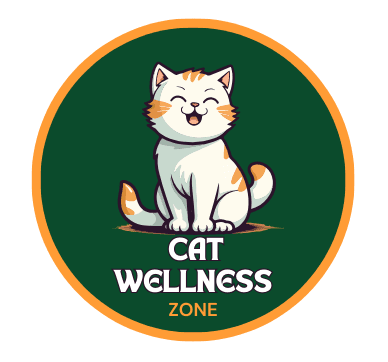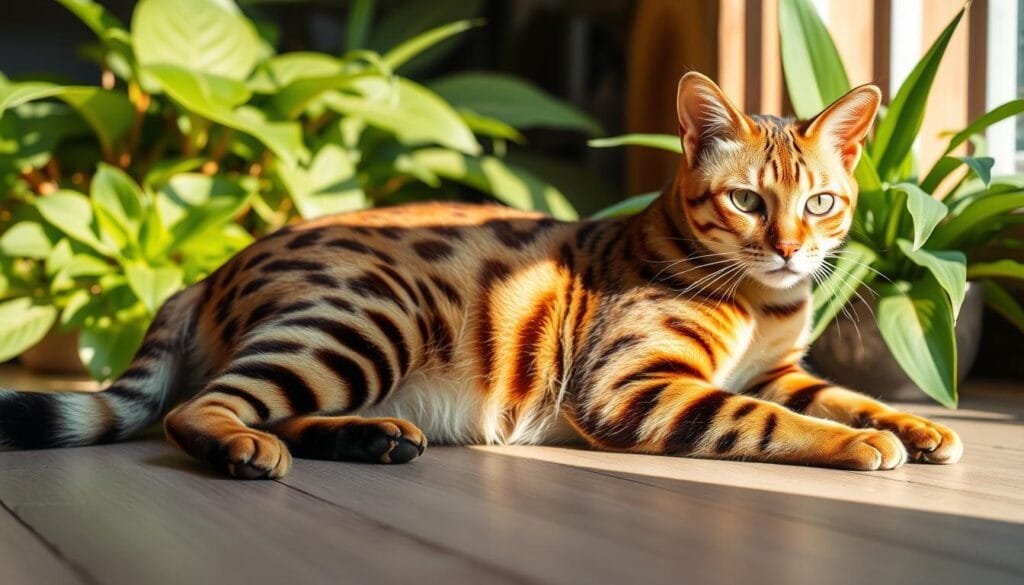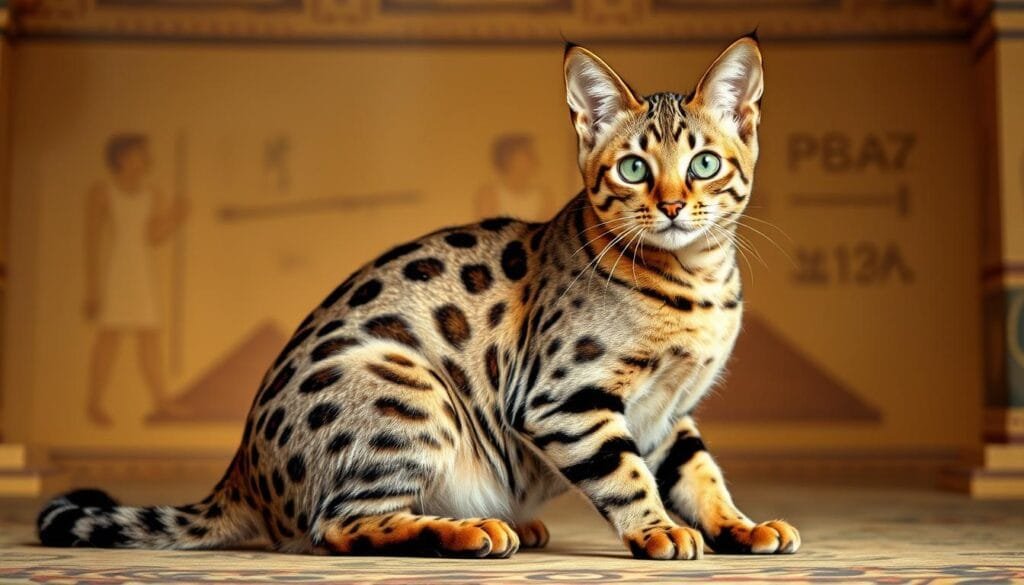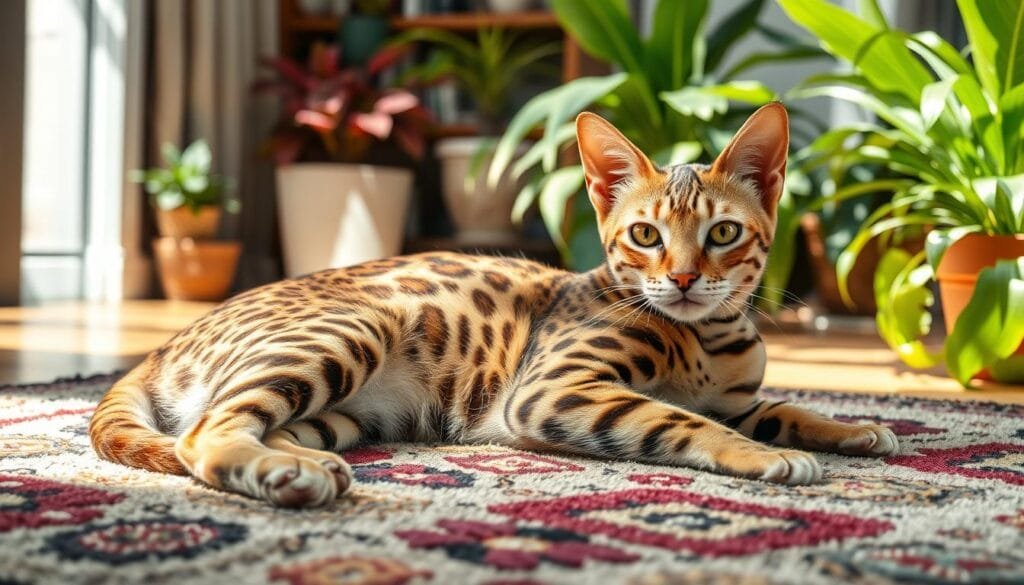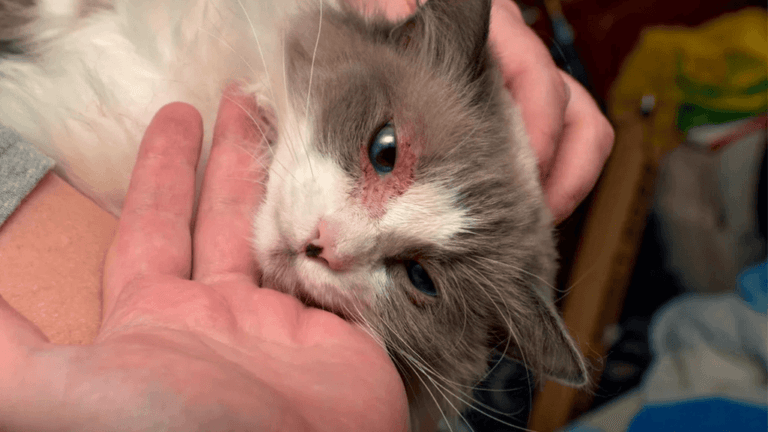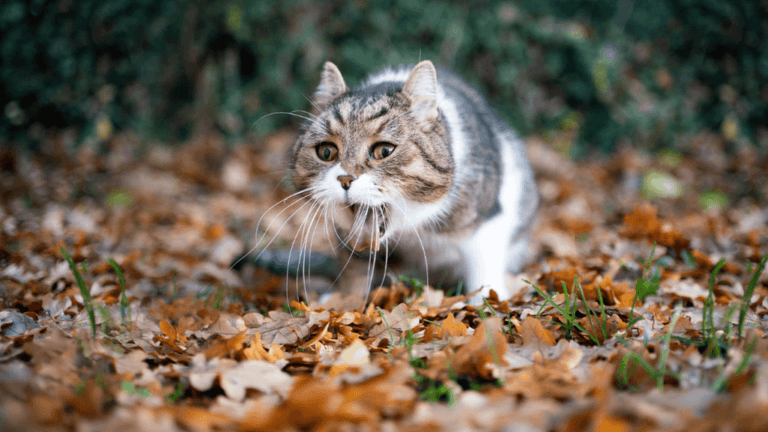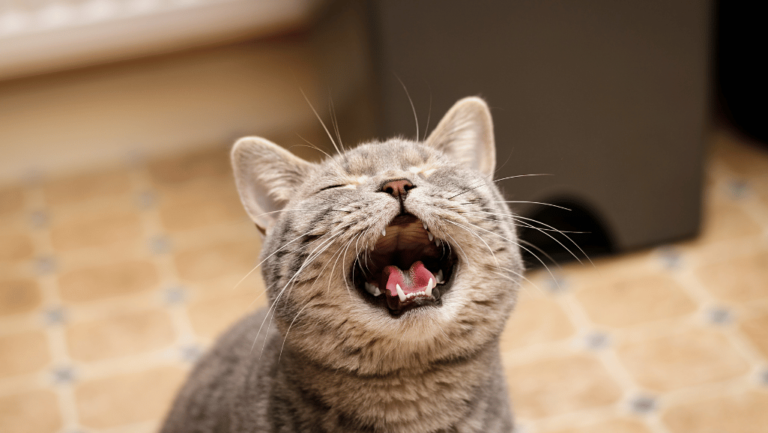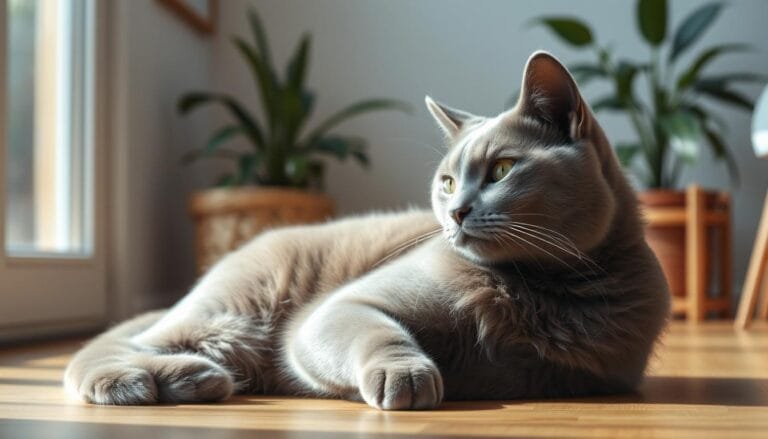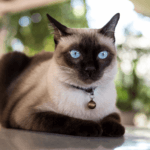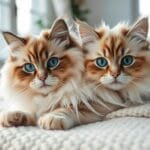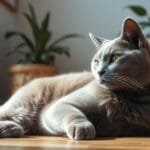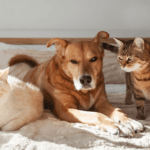Spotted cat breeds have won the hearts of many cat lovers. They look like wild animals but are safe to keep at home. These cats are like mini leopards and ocelots, making them popular pets.
There are many types of spotted cat breeds, like Bengals and Egyptian Maus. They have special coats and personalities. If you love the look of wild cats but want a pet you can care for at home, these cats are perfect.
Key Takeaways:
- Spotted cat breeds are domestic cats with exotic, wild-looking coats reminiscent of their larger feline cousins.
- These breeds offer cat lovers the opportunity to own a mini version of a wild cat without the challenges of keeping an actual exotic pet.
- Popular spotted cat breeds include Bengals, Egyptian Maus, Ocicats, and Savannahs, each with their own unique characteristics and personalities.
- Owning a spotted cat breed allows you to enjoy the beauty and allure of a wild feline in a domestic setting.
- Exploring the world of spotted cat breeds is an exciting journey for cat enthusiasts looking for a unique and eye-catching feline companion.
Introduction to Spotted Cat Breeds
For cat lovers looking for something special, spotted cat breeds are perfect. They have stunning coats with spots, rosettes, and marbled patterns. These cats remind us of leopards, jaguars, and ocelots. Their unique fur makes them stand out, as spotting is rare in domestic cats.
What Makes Spotted Cats Unique
Spotted cat breeds look wild and exotic. Their coats are the result of careful breeding. This aims to keep their wild look while making them friendly. Some famous breeds include:
- Bengal cats, the only domestic breed with well-defined rosettes similar to those of leopards and jaguars
- Egyptian Maus, one of the few naturally spotted breeds, available in silver, bronze, and smoke colors
- Ocicats, which resemble wild cats but have no wild DNA, and come in black, chocolate, lilac, and silver
- Savannah cats, the offspring of domestic cats and African Servals, recognized only by TICA
These cats are not just beautiful. They also have fun personalities. They make great pets for the right family.
The Allure of Exotic Feline Companions
Many people want a pet that looks wild but is safe. Spotted cat breeds offer this. They are like mini versions of wild animals, but safe to keep at home.
Owning a spotted cat breed allows you to experience a little bit of the wild right in your living room, while still enjoying the companionship and affection of a domestic pet.
These cats are not just pretty. They are also smart, playful, and loyal. This makes them very popular as pets.
| Breed | Unique Characteristics | Recognized By |
|---|---|---|
| Bengal | Well-defined rosettes, various color combinations | TICA |
| Egyptian Mau | Naturally spotted, silver, bronze, and smoke colors | TICA |
| Ocicat | Resembles wild cats, no wild DNA, multiple colors | TICA |
| Savannah | Offspring of domestic cats and Servals, tall and slim build | TICA |
Bengal Cats: Mini Leopards of the Domestic World
Bengal cats are a standout among spotted cat breeds. They are known for their exotic looks and unique personalities. Their striking rosettes and wild features bring a jungle vibe to homes worldwide.
Origins and History of Bengal Cats
The Bengal cat breed started in 1963 with a domestic cat crossed with an Asian leopard cat. The name Bengal was given in 1974. Early Bengals were considered domestic after four or five generations from their wild roots.
By the 1980s, TICA had about 125 Bengal breeders. TICA recognized the breed in 1985. By the 2000s, there were around 1,000 Bengal breeders globally.
Physical Characteristics and Personality Traits
Bengal cats are famous for their leopard-like spots and rosettes. These marks show their wild side. Bengals come in many colors and patterns, like marbled and silver.
Male Bengals weigh 11 to 17 pounds, and females weigh 7 to 12 pounds. Despite being far from their wild roots, Bengals still have a wild look and a lively, curious nature.
| Characteristic | Description |
|---|---|
| Coat | Short, soft, and luxurious with distinct spots or marbled patterns |
| Colors | Brown, silver, gray, mahogany, and more |
| Eyes | Oval or almond-shaped, usually green, gold, or blue |
| Personality | Active, curious, intelligent, and playful |
Caring for a Bengal Cat
Bengal cats are lively, smart, and curious. They need lots of play and interaction. They love to climb and play in water, making cat trees and shelves a must.
Getting a Bengal cat means they’ll be around for 14 to 16 years. They’re usually ready to go home at 16 weeks. To show in TICA, they need three generations of Bengal-to-Bengal breeding.
Owning a Bengal cat is like having a small piece of the wild in your home. These mini leopards bring joy, adventure, and endless entertainment to their families.
Egyptian Maus: Ancient Elegance with Spots
The Egyptian Mau is a standout among spotted domestic shorthairs. Their history goes back to ancient Egypt, winning hearts for centuries. They are the only breed with natural spots, making them unique.
Egyptian Maus look amazing and are very athletic. Males weigh 10-14 pounds, females 6-10 pounds. Their bodies are sleek and agile, with a special skin fold under their belly.
These cats have bright green eyes with mascara-like lines. Their head shape and large eyes give them a cute, worried look.
The Egyptian Mau’s spots are not just a fashion statement; they are a testament to the breed’s natural evolution and adaptation.
Some Maus have tabby or blotched patterns, but the spotted ones are most sought after. Their tail is thick and banded, adding to their exotic look.
The Egyptian Mau was recognized in the cat world in 1968. They were recognized by several organizations, showing their popularity. Despite their ancient history, they are still a rare breed, with only about 200 kittens registered each year.
| Year | Organization | Egyptian Mau Popularity Ranking |
|---|---|---|
| 2022 | Governing Council of the Cat Fancy (GCCF) | 27 out of 40 breeds |
| 2018 | Cat Fanciers’ Association (CFA) | 27 out of 45 breeds |
Egyptian Maus need special care for their health. They are more likely to get bladder stones than other cats. Regular vet visits and a good diet are key to their well-being.
Egyptian Maus are smart, sensitive, and loyal. They love their families and enjoy being close to them. Their beauty and charm make them a favorite among cat lovers worldwide.
Ocicats: The Spotted Surprise
The Ocicat is a stunning spotted domestic cat that has won the hearts of many. It looks like a wild cat but is as loving as a pet. This breed was created by accident in the 1960s by Virginia Daly.
She was trying to make a Siamese with Abyssinian points. But, she got a surprise – the Ocicat, named for its wild ocelot look.
The Accidental Creation of the Ocicat
Virginia Daly started by crossing a Siamese with an Abyssinian. She wanted a Siamese with Abyssinian points. But, she got a spotted kitten named Tonga.
Tonga’s look caught everyone’s eye. Through breeding with American Shorthairs and more Abyssinians, the Ocicat breed was born.
“The Ocicat is a result of a happy accident, a serendipitous discovery that has enriched the lives of cat lovers worldwide.” – Virginia Daly, Ocicat breeder
The Ocicat was recognized by the Cat Fanciers’ Association (CFA) in 1966. It got Provisional Status in 1986 and Championship Status in May 1987. The breed was allowed to mix with Siamese and American Shorthairs until 1986. Abyssinians were allowed until 2015.
Ocicat Appearance and Temperament
Ocicats are medium to medium-large cats. They weigh 6–15 pounds and are 9–11 inches tall. Their coat is short and smooth, with a unique spotted pattern.
They come in 12 colors, including primary, diluted, and silver versions. This makes them stand out.
| Characteristic | Description |
|---|---|
| Size | Medium to medium-large, weighing 6–15 pounds |
| Coat | Short, smooth, with distinctive spots |
| Colors | 12 colors, including primary, diluted, and silver variations |
| Temperament | Devoted, confident, extroverted, easily trainable, and sociable |
| Lifespan | 12–18 years |
Ocicats look wild but are very loving. They bond strongly with their owners and can act like dogs. They are smart, loving, and easy to train.
They live 12–18 years on average. But, they might get sick like their ancestors. Good breeding and vet visits can help.
Ocicats need a good diet, grooming, and lots of play. They are unique and loving, making them a great pet choice.
Savannah Cats: Tall, Lean, and Wildly Spotted
The Savannah cat is a breed that stands out for its exotic look and unique background. These cats are a mix of a domestic cat and a serval, a wild African cat known for its long legs and spots.
The Serval Influence in Savannah Cats
The first Savannah cat was born in the 1980s in the United States. This marked the start of this interesting hybrid breed. Savannah cats get many traits from their serval side, like being tall, lean, and having a unique coat pattern.
The amount of serval genes in a Savannah cat varies by generation. F1 Savannahs have the most serval genes and are the priciest, sometimes costing up to $20,000.
Savannah Cat Size and Markings
Savannah cats are known for their size. They can grow up to 18 inches tall and weigh between 12 to 25 pounds. This makes them the tallest domestic cat breed.
Their coat features bold, dark-brown to black spots. These spots can be round, oval, or elongated, giving them a stunning look.
| Savannah Cat Generation | Serval Percentage | Price Range |
|---|---|---|
| F1 | 50% | Up to $20,000 |
| F2 | 25-30% | $4,000 – $9,000 |
| F3 | 12.5-15% | $2,000 – $4,000 |
| F4 and beyond | Less than 10% | $1,000 – $2,500 |
Living with a Savannah Cat
Savannah cats can be great pets for the right family. They are smart, loyal, and fun-loving. But, they need daily interaction, lots of space, and stimulation.
They live for 12 to 20 years and need special care. In some places, owning certain Savannah cat generations is restricted because of their wild ancestry.
“Savannah cats are not your typical house cat. They are active, curious, and require a lot of interaction and stimulation. But for the right family, they can be an incredible companion with their loyalty, intelligence, and stunning beauty.”
– Jane Smith, Savannah Cat Breeder
Savannah cats are still rare but growing in popularity. Their tall height, striking spots, and wildcat-like features make them remarkable and captivating.
Pixie-Bobs: Bobcats in Disguise
Pixie-Bobs are a unique and captivating breed of domestic cats. They have a striking bobcat look and friendly personalities. These short-tailed cats are a favorite among cat lovers.
The Pixie-Bob breed started in the Pacific Northwest in the 1980s. Carol Ann Brewer, the founder, aimed to create a domestic cat like the wild North American Bobcat. It’s believed Pixie-Bobs came from a natural cross between a domestic cat and a wild bobcat.
Pixie-Bob cats are known for their polydactyl paws. Many have extra toes, adding to their unique look. They also have short, bobbed tails, usually about two inches long.
“Pixie-Bobs are not just visually striking; they also make wonderful companions. These cats are known for their outgoing personalities, intelligence, and friendly demeanor, making them suitable for families with children and other pets.”
Despite looking wild, Pixie-Bobs are domestic cats. DNA tests at UC Davis showed they don’t have bobcat ancestry. Instead, they are genetically diverse, with evidence of other breeds like Bengal cats in their genes.
Pixie-Bob cats weigh between 8 to 20 pounds. Males are larger, weighing 12 to 17 pounds. Females weigh 8 to 12 pounds. They have a muscular build and a “hooded” look, similar to the Coastal Red Bobcat.
| Characteristic | Description |
|---|---|
| Coat | Short fur with a spotted pattern in tan to reddish-brown colors |
| Eye Color | Golden to shades of green |
| Lifespan | 13-15 years on average, varying based on living environment and health |
| Grooming | Regular brushing, dental care, ear checks, and nail trims |
| Personality | Outgoing, intelligent, friendly, and playful |
Pixie-Bobs are great companions but may not be good for households with cat allergies. They can also have health issues like hyperthyroidism and gastrointestinal problems.
Despite being new, Pixie-Bobs are recognized by The International Cat Association (TICA). They got exhibition status in 1993. However, other major registries like the Cat Fanciers’ Association (CFA) and the Fédération Internationale Féline (FIFe) have not recognized them yet.
In conclusion, Pixie-Bob cats are unique with their bobcat look, polydactyl paws, and short tails. Their friendly nature and adaptability make them great companions for cat lovers who want a touch of the wild.
Serengeti Cats: Spotting the Difference
The Serengeti cat is a unique and captivating feline companion. They have a striking appearance and engaging personalities. This makes them popular among cat lovers who want a wild-looking pet without the challenges of owning a wild cat.
Developing the Serengeti Breed
The Serengeti cat was developed in the 1990s by Karen Sausman from California. Sausman aimed to create a domestic cat that looked like the African Serval. She used Bengal cats and Oriental Shorthairs to achieve this look and temperament.
Serengeti Appearance and Personality
Serengeti cats have sleek, spotted coats and an athletic build. Their coats are in various colors like golden brown, gray, and solid black. They have bold, black spots arranged in a random pattern.
They have striking gold or amber eyes and large, round-tipped ears. This gives them an alert and attentive look. They are medium to large in size, with males weighing 12 to 15 pounds and females weighing 8 to 12 pounds.
Serengeti cats are energetic and playful. They are also intelligent and adaptable. They are vocal, using meows, chirps, and trills to communicate. They love being involved in family activities.
| Characteristic | Description |
|---|---|
| Height | 8–10 inches |
| Weight | 8–15 pounds |
| Lifespan | 9–15 years |
| Colors | Gold, gray, brown, black, spotted |
| Personality | Energetic, gentle, playful, outgoing |
Serengeti Cats as Family Pets
Serengeti cats make excellent family pets. They are affectionate, loyal, and enjoy being part of the household. They are adaptable and can thrive in various living situations with proper care and attention.
They are generally good with children and other pets when introduced properly. They have a confident and outgoing personality. This makes them well-suited for active families who can provide them with playtime and interaction.
Proper nutrition, exercise, mental stimulation, and hygiene play a significant role in a Serengeti cat’s lifespan and quality of life.
When considering a Serengeti cat, research reputable breeders. Ensure the cat has been well-socialized and raised in a healthy environment. With their striking appearance, engaging personality, and adaptability, Serengeti cats can be wonderful companions for the right household.
Rare and Exotic Spotted Cat Breeds
Some spotted cat breeds are very rare and exotic. They have unique looks and personalities. Among these rare spotted cats are the California Spangled, Cheetoh, and Toyger breeds. Each has its own story and traits.
California Spangled Cats
The California Spangled Cat is very rare, with only a few hundred in the world. It was created in the 1980s by Paul Casey and Louis Leakey. They wanted to look like a miniature leopard to help stop the illegal trade of big cats.
These cats have a stunning spotted coat and are friendly. They make a unique addition to any home.
Cheetoh Cats
The Cheetoh is a rare breed, a mix of a Bengal and an Ocicat. It has a large, athletic body and a striking coat. Cheetoh Cats are smart, playful, and loving.
They were developed in the early 2000s. This makes them rare and special.
Toyger Cats
The Toyger looks like a miniature tiger, with bold stripes and spots. Judy Sugden created it in the 1980s. It has a tiger-like look but a domestic cat’s gentle nature.
These cats are active, curious, and love to play. Toygers are rare but gaining popularity for their unique look and personality.
| Breed | Average Lifespan | Typical Price Range |
|---|---|---|
| California Spangled | 12-16 years | $800 – $3,000 |
| Cheetoh | 12-14 years | $1,000 – $3,000 |
| Toyger | 10-15 years | $1,500 – $5,000 |
These rare spotted cat breeds show the amazing diversity in cats. They may be hard to find, but their unique looks and charming personalities make them very sought-after. Cat lovers love these miniature wild cats for their beauty and charm.
Caring for Spotted Cat Breeds
Spotted cat breeds look like wild cats but need the same care as any house cat. They need regular grooming, a good diet, and enough exercise. This keeps them healthy and happy.
Grooming and Health Considerations
These cats have short, sleek coats that don’t need much grooming. But, brushing them helps remove loose fur and keeps their skin and coat healthy. Watch for any skin problems during grooming.
Keeping their teeth clean is also key. Brushing their teeth with pet-safe toothpaste can stop dental disease. Regular vet visits are important to catch health issues early.
Ocicats, for example, have a genetic predisposition to certain health issues, making regular vet visits and preventive care especially important for this breed.
Diet and Exercise Needs
They need a balanced diet to stay healthy and avoid obesity. Obesity can lead to many health problems. Talk to your vet to find the right food for your cat.
Exercise is also crucial. High-energy breeds like Bengals and Savannahs need daily play. Give them toys, climbing structures, and playtime to keep them active and healthy.
| Breed | Lifespan | Temperament | Size |
|---|---|---|---|
| Bengal | 12 to 20 years | Active, intelligent, curious | Medium to large |
| Egyptian Mau | 10 to 15+ years | Gentle, active, devoted | Medium |
| Ocicat | 15 to 18+ years | Active, playful, confident | Medium |
| Savannah | 12 to 15+ years | Outgoing, inquisitive, confident | Medium to large |
In conclusion, caring for a spotted cat breed is a big responsibility. It requires grooming, health care, a good diet, and exercise. By meeting their needs, you can keep your exotic-looking cat happy and healthy for many years.
Conclusion
For those who love cats, spotted cat breeds are a dream come true. They mix wild beauty with the love of a house cat. Each breed has its own look, personality, and needs, making them perfect for those who want a wild-looking friend.
From the Bengal’s bold spots to the Egyptian Mau’s natural spots, each cat is unique. Some, like the Ocicat and Serengeti, are social and easy to get along with. Others, like the Savannah, need owners who can keep up with their energy and provide lots of play.
Before getting a spotted cat, it’s important to do your research. You need to know if a spotted cat fits your lifestyle and home. With the right care and love, a spotted cat can bring joy and beauty into your life.
